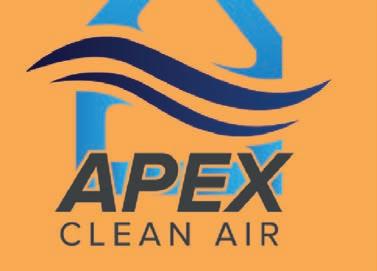












BY HALEY LENA HLENA@COLORADOCOMMUNITYMEDIA.COM
What happens when physical therapists, patients and the gaming and technology department at Children’s Hospital Colorado come together?
A virtual reality game called “Booger Blaster” is created.
When Marian Brewer, a primary oncology physical therapist assistant at Children’s Hospital Colorado, transitioned from outpatient therapy to inpatient ve years ago, she began to learn how virtual reality can be a
stepping stone in improving a patient’s willingness to participate in physical therapy.
“When you’re inpatient, it isn’t always easy,” said Brewer. “Sometimes just getting out of bed and sitting at the edge of the bed can be climbing a huge mountain and can be very exhausting.”
One of the main objectives when battling cancer, said Brewer, is preserving strength, exibility and mobility to help a person stay engaged with what brings them joy.
Brewer began working with Alyson McPherson after she was diagnosed with a rare ovarian cancer at the age of 10.
In July of 2023, McPherson, an active youth from Centennial, was diagnosed with germ cell tumor cancer, which accounts for less than 2% of ovarian cancers, according to the American Cancer Society.
Several tumors were found in McPherson’s abdomen, and within two weeks, she underwent an extensive abdominal surgery to remove the tumors. Chemotherapy treatments followed, and McPherson started physical therapy to help build stamina and regain her strength.
BY MCKENNA HARFORD MHARFORD@COLORADOCOMMUNITYMEDIA.COM
U.S. Rep. Lauren Boebert and Douglas County o cials have proposed moving the Small Business Administration’s Colorado District O ce from Denver to Douglas County, citing alignment with President Donald Trump’s immigration policies.
Earlier this month, the Small Business Administration announced it would move its ofces out of Denver, Atlanta, Boston, Chicago, New York City and Seattle to “less costly, more accessible locations that better serve the small business community and comply with federal immigration law.”
On March 10, Boebert sent a letter to Kelly Loe er, the lead administrator for the Small Business Administration, thanking her for her commitment to move the administration’s ofces out of sanctuary cities and encouraged her to relocate the o ces to Douglas County. e letter includes examples of Douglas County’s support for Trump’s immigration policies, such as the county’s lawsuit against the state over laws that limit how police can work with Immigration and Customs Enforcement, and the county’s 2023 resolution a rming its anti-sanctuary status.
“In contrast to sanctuary cities, Douglas County has worked tirelessly to safeguard its residents and collaborate with federal agencies, such as ICE, to ensure the safety and wellbeing of its citizens,” Boebert said in the letter.
Boebert touted the county as
BY RACHEL COHEN KUNC
were rediscovered in Wyoming in 1981 when a ranch dog caught one, revealing a small remaining population. Over the past four decades, scientists have been working to revive this prairie carnivore that’s part of the weasel family. However, last month, their e orts su ered a blow.
covery across 12 states-including Montana, Wyoming, Colorado, Utah, New Mexico and Arizona-was red as part of the Trump Administration’s federal workforce cuts.
never been red from a role before.”
because she took the job as the national recovery coordinator with the U.S. Fish and Wildlife Service last year. But before that, she’d spent nearly 30 years as a wildlife biologist at Colorado Parks and Wildlife, with much of that time working on ferret conservation.
black-footed ferret to be one of the most endangered mammals in North America. It was among the rst species listed under the Endangered Species Act and remains critically endangered. Jackson was deeply aware of her role in their recovery.


species that’s still, honestly, on the brink of extinction,” she said.
Jackson’s job involved coordinating recovery e orts, securing permits for conservation work and overseeing the reintroduction of captive ferrets to 15 wild sites in partnership with federal and state agencies, tribes and nonpro t organizations.
“We’re losing that nexus, that glue, that holds all of us together,” said Travis Livieri, executive director of Prairie Wildlife Research, a nonpro t that works on ferret conservation in South Dakota.
Additionally, two of Jackson’s colleagues at the National Black-footed Ferret Conservation Center near Fort Collins, Colo. were also let go. e 11-member team suddenly shrunk to eight at a critical time-


of other species from needing state or federal listing,” Jackson said.
However, ferret conservation is handson and labor-intensive. At the Fort Collins center, which houses about two-thirds of the captive population, sta provides round-the-clock feeding, cleaning and veterinary care. During breeding season, they carefully monitor the pairs, as the territorial animals can sometimes kill one another. By late summer, the center may have up to 500 ferrets on its watch, as it prepares about 200 for reintroduction into
With fewer sta , Jackson noted, the team might need to limit their breeding capacity, which could undermine partner organizations’ e orts to establish reintro-
One of the biggest threats to ferrets in the wild is the plague, which often requires annual disease mitigation. But federal funding uncertainty is complicating this part of the recovery process, too.
Livieri’s group had planned to start spraying insecticide dust in April to eliminate the eas that carry the plague, but he’s not sure whether he’ll receive assurance by then that he can spend the federal money that usually funds that work. Last year, a plague outbreak caused a prairie dog dieo in the Badlands of South Dakota.
“If we aren’t vigilant, the largest blackfoot ferret population in the world is potentially at risk,” he said.
Chamois Andersen of Defenders of Wildlife said while nonpro ts are prioritizing resources to ensure the recovery progress continues, the federal government plays a crucial role.
just as ferrets begin breeding season.
“Every time there’s a setback of some sort, whether it’s a biological setback, a disease outbreak, a budget cut or a staing cut, it’s something that sets back recovery,” Jackson said.
e U.S. Fish and Wildlife Service said it does not comment on personnel matters.
“We are working closely with the O ce of Personnel Management to ensure we are prioritizing scal responsibility for the American people,” a spokesperson wrote in a statement.
ough slender, black-footed ferrets are feisty predators. is is particularly useful since they are about the same size as prairie dogs, which make up 90% of their diet.
e ferrets also take up residence in the burrows dug by prairie dogs, sharing the space with other creatures like foxes, turtles and rattlesnakes. Because of this, Jackson refers to them as an “umbrella species”; their conservation helps other animals in the prairie ecosystem.
“By protecting that prairie dog habitat for ferrets, we’re keeping a whole bunch
“It’s going to be a real challenge for the NGOs to ll in those gaps,” she said.
e black-footed ferret has made a big comeback since the 1980s when a handful from Wyoming were brought into captivity. Now, there are about 800 individuals.
“We’ve made amazing strides,” Jackson said. “But it’s still not the sort of number where we can say these guys will survive if we step away for a few years.”
is story was made available via the Colorado News Collaborative. Learn more at https://colabnews.co
BY BEAU BAKER, ALEX MURPHY KUNC
Colorado health o cials are closely watching the ongoing measles outbreak in the U.S., and recommended that residents get vaccinated against the virus ahead of spring break travel.
Over 100 cases were reported in West Texas last month and the virus has now shown up in 11 other states, including Colorado’s neighbor New Mexico.
Colorado’s state epidemiologist Dr. Rachel Herlihy does not take the prospect of a measles outbreak lightly.
“It’s actually the most contagious virus that we know of,” Herlihy said. “In a group of people that is not immune to the virus, 9 out of 10 people who come in contact with someone with measles will go on to develop a measles infection.”
e Centers for Disease and Control documented 222 cases as of March 6. Herlihy says that when measles outbreaks reach this size they can take several months before they resolve.
Measles is more than just a rash. It’s a serious respiratory disease that can have lasting e ects. About 20% of people infected will need hospital care, and it can be fatal.
What Herlihy is most concerned about are the pockets of under-vaccination that exist throughout the state.
“Individual schools or childcare facilities, playgroups, church groups or community organizations where vaccination rates in those much smaller groups are well below the threshold of protection,” she said.
Colorado’s health department keeps data on vaccination rates across the state. Front Range school districts are all above 90%, but some districts -- including Lake County and several in and around Colorado Springs -fall in the low- to mid-80% range.
Some residents may be wondering if they or their children have been vaccinated.
You can request a copy of vaccine records through the Colorado Public Health and Environment website. O cials also recommend talking with your primary health provider. Herlihy can’t say for sure if Colorado will



see measles cases in the future but is using the current moment as a reminder of the risk.
“We’re really seeing these outbreaks occurring elsewhere as a call to action for all
of us in Colorado to make sure that we are protected,” she said. is story was made available via the Colorado News Collaborative. Learn more at https://colabnews.co
It’s clear to real estate professionals that, although some buyers must buy and some sellers must sell, buyers and sellers who are not under pressure to do a deal are looking and listening before buying or selling a home. These are complicated times!


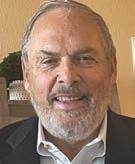
The statistics below reflect a slowing of the real estate market within 25 miles of downtown Denver — and likely nationwide. Due to space limitations, I’m only including statistics for the first two months of the last six years, but it’s instructive to see how these months compare year-over-year. At htttp://RealEstateToday.substack.com I have included all 12 months of each year. Although every other metric documents a slowing market, the median closed prices set a record for both January and February:

Meanwhile, look at how many listings expired without selling during the same months:
Jim, one of the things I look forward to when going up to my cabin in Bailey is reading the local Jeffco newspapers piled up in my mailbox containing your columns. I’m glad you wrote a column explaining you were a journalist before coming over to real estate. That explains a lot of the quality of your columns — and the ability to write when you and Rita are on a long cruise!
I have learned a lot from your writings, which I appreciate — never too old to keep up with new info. I offer my praise, as you have talked evenly and without bias about real estate issues. It comes through that you are several cuts above the normal real estate agents whom I’ve interacted with, because you point out the negatives in the real estate universe and are not hyping the sales pitch.
Unfortunately, I won’t need your services, as I will keep my Colorado Springs house with its low-interest mortgage, and my cabin in Bailey has such a low basis that I’ll put it in my will, denying the IRS and Colorado big capital gains tax payments.
The good news is that I have family members who will, hopefully, come home to Colorado from London in 2-3 years, and I will recommend that they hook up with your brokerage. Your columns are of great quality and speak well of the knowledge and care you provide your clients.
—R. Scott Schofield, Attorney at Law

The number of active listings is surging, but the number sold listings is dropping, as shown in these two charts:


That has resulted in the higher inventory of unsold listings in recent months:

Another important metric is the ratio of closed price to original listing price. During the pandemic, more than half the listings sold for as much as 4% above the listing price as a result of bidding wars, but look how that metric has changed:

With the “spring selling season” coming up, I find it hard to be optimistic about the real estate market, because it appears that the chaos we’re seeing in our national government is only going to get worse, and markets don’t like uncertainty.
If builders, who get most of their lumber from Canada, see a big increase in costs due to tariffs, they may pause construction or at least increase the price of new homes. Meanwhile, if the courts end up allowing the mass firing of federal workers — many of
Meet Our Newest Broker Associate

Serving southeast Denver, Littleton, and Ken Caryl, Chris Sholts has been helping clients find their dream homes for over four years.
A graduate of the University of Colorado, Chris combines local expertise with a strong dedication to his clients, taking the time to truly understand their needs and priorities. Chris’s passion lies in creating seamless and stress-free experiences for his clients. Whether you’re buying your first home, upgrading, or searching for the perfect neighborhood, Chris goes above and beyond to ensure every detail aligns with your vision.
Everything you read in this ad (and more) is posted on our Real Estate Today Substack blog. Scan the QR code at left to open and subscribe to it — free of course. Each article and listing is there, often with additional content and graphics, plus useful hyperlinks.
My other Substack is Talking Turkey, my left-of-center political blog. It is not in print anywhere. Click on the QR code at right if you would like to see what I have to say.

whom work in Lakewood’s Federal Center and elsewhere in Colorado (such as the national parks, VA hospitals and national forests), that could be very disruptive to our real estate market.
None of us are experienced at dealing with the kind of political situation we are in now, and we can’t wait to see what’s on the other side. Whatever happens, you can count on us serving you well.
This week I learned why, thanks to an email from Alpine Building Performance. Here’s what they wrote:
“If the screws used to attach the window well touch the metal bars (rebar) inside the concrete, it creates rust. This happens because electricity flows between the metals, causing the window well to rust faster.
“This is why sometimes you will see one window well completely rusted through and the other window wells in the home showing no signs of rust. Many people think that rusty window wells can be sanded and painted with a rust inhibitor to keep it from rusting further. This is not true.
“The window well rusts from the dirt side in, so once you see rust inside the window well, it has already made it through the entire thickness of the metal. Unfortunately, the only remedy to the rust issue is a full window well replacement.
“When having your window well replaced, make sure that it is replaced in a manner that it will not rust prematurely again.”
The email promoted a company, Window Well Solutions, LLC, which has developed a method of replacing window wells using a fiberglass composite mounting system which creates a non-conductive break between the foundation and the metal window well.
Unfortunately, that company is in Fort
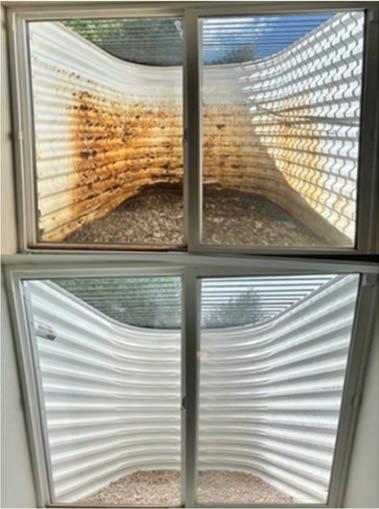
Collins and doesn’t take on new customers south of Denver’s northern suburbs. But now you know what the answer is to this problem. The company has patented their system, so it is available nationwide.
On our blog I have a link to a video showing how WWS replaces rusted window wells.
We were beyond impressed with Kathy Jonke! She went above and beyond for us. She accommodated all of our needs. She was insightful and extremely helpful throughout the entire process! I can’t recommend her more! — Eve Wilson Not only did Jim Smith do a superb job in the marketing and sale of our home, he provided his company's moving truck and long time handyman Mark to move our belongings to our new home in Broomfield. When a problem occurred, he hired an outside moving company to help complete the move in one day instead of two! We are so pleased that Jim helped us through the process of selling our home and moving us into our new home. — Reese & Sally Ganster I was helping my mom and her husband sell the house. David Dlugasch was very accommodating to this dynamic. He arranged for all the paperwork to be done at the nursing home for the ease of my mom. David and I worked together to get the very full and dated house ready to go on the market. He went above and beyond by going to the paint store and hardware store etc. He was always available via text for any question I had along the way. He had a lot of resources. The best one was Mark, the handyman. I could always count on Mark. Mark was very meticulous and could do anything. What a great team! I could not have taken on this monumental task without them!!
—Heidi Warner
beyond our expectations. My wife and I have done six real estate transactions and we think Chuck is the best Realtor ever. We would highly recommend Chuck to other home buyers.
— S. Diamond
Greg Kraft was knowledgeable and professional. He was very easy to work with and was super proactive in searching the listings. That was a key in us managing to buy the townhome in a very competitive market. He was also very responsive and communicated really well with us and the listing agents. We would recommend him without reservation.
— J. Knight
Jim Swanson was kind and patient while listening to my questions. He helped me to translate the real estate language and manage the sale process. He connected the dots, allowing me to make good decisions, maintain my personal integrity and profit from the sale when a great offer came to the forefront. Jim, Thank you for putting communication and community first.
— Name Withheld
Dave Dlugasch did a phenomenal job working with us! We were not easy buyers because of an extensive “wish list” and he did his homework on each property we looked at until we found the right one. He gave us great advice and was very supportive of all our questions throughout the entire process.
— M. Madigan

This nicely updated and well-maintained condo at 992 S. Dearborn Way #7 is in the Sable Cove subdivision east of I-225 and north of Mississippi Avenue. The seller, who bought it for a family member, updated everything in this ground level unit. It has luxury vinyl plank flooring throughout, a pantry with slide-out drawers, laundry hookups, and a wood-burning fireplace. There is lots of open lot parking for you and your guests. There is a locked storage closet on the front porch, big enough for all your gear. I’ll be holding it open myself this Saturday, March 22nd, from 11 a.m. to 1 p.m. Or view the narrated video tour I created at www.GRElistings.com, then call me at 303-525-1851 to request a private showing.
Chuck Brown is a superb Realtor. He is very knowledgeable regarding the market, very proactive and highly professional. Chuck was great at identifying potential properties that met our criteria, he moved very quickly to show us potential properties and his analysis of property values was on point and very thorough. Chuck was extremely proactive and responsive in his communications with us. Chuck went above and

Based on Jim Smith's knowledge, experience, and expertise in the real estate arena, we decided to work with him when it came time to downsize. We used Jim and his real estate firm to both purchase the new home and sell our existing property. All communication with Jim has been top notch. He also provided all packing materials and labor to make our move. It was a great experience from start to finish! — R. Trujillo


“With these types of surgeries, patients typically don’t want to move, and when you don’t move, it can get harder to move each time,” Brewer said. McPherson would have physical therapy rst thing in the morning.
“I’d be like ‘no, I don’t want to do this,’” said McPherson.
Motivated to nd ways that would help patients eventually get out of bed, Brewer started working with Abe Homer, the gaming technology supervisor at Children’s Hospital Colorado, on a game that would make physical therapy more fun and engaging, while including important movements.
Brewer and Homer introduced McPherson to a virtual reality game called “Booger Blaster” and she was eager to try it.
“Alyson took o with it,” said Brewer. “She absolutely loved it.”
Inside the game of ‘Booger Blaster’
With some of the design elements thought up by the patients themselves, “Booger Blaster” involves a giant block of noses oating in the sky — and from a nose comes a booger ying at you.
e player has virtual access to a table with di erent items on it, designed to meet di erent physical therapy goals but disguised as silly items. For example, patients can use a ninja star in the shape of a pizza, a bow and arrow that shoots out french fries and hot dogs, and boxing gloves to ght o the boogers.
“ e punching, kicking and that just kind of took my mind o from doing all the exercises,” McPherson said.
Another part of the game that McPherson likes is the cat blaster. Accompanied




A screenshot of “Booger Blaster,” a virtual reality game created by Children’s Hospital Colorado’s physical therapy and gaming and technology departments to help make physical therapy more enjoyable for patients. In the game, a pink cat can spit hamburgers at a target to get more points.
with fun sound e ects, the patients can use the cat blaster to shoot hamburgers at
a target to gain more points. Depending on the goals of their treat-
ment, each game makes the players do certain exercises. e physical therapist can also change the speed and cadence of the boogers, depending on what part of the body the therapist wants the patient to work on.
Additionally, virtual reality can be used as a technique that helps distract the patient’s brain from the pain that can be experienced when trying to reach their physical therapy goals.
Although virtual and extended reality, which is the blend of the physical and digital world, is not new to the healthcare eld, Brewer said professionals are looking into research projects on how to expand this form of care throughout Children’s Hospital and to outpatient locations.
“It was a really fun, inventive way to just incorporate physical therapy in a nontraditional way,” said McPherson’s mom, Laura. “Especially for kids who aren’t allowed to leave their rooms because of immunity, or (when) they’re in the middle of infusions, they can’t leave. It makes it a lot easier for them to be able to accomplish what they need to do for physical therapy, to keep up their stamina and strength.”
After four rounds of chemotherapy, McPherson had a second abdominal surgery later that year to remove a few of the remaining tumors.
McPherson has been cancer free since February 2024 and has gone back to her normal activities — including attending the Colorado Ballet Academy.
Wishing she could have played the game every day, McPherson said she believes this game will be able to help other patients.
“I’d say some kids don’t like it (physical therapy) that much, but when they have their mind o of something — but they’re still doing physical therapy — that can help them, but also do something that’s happy and silly,” McPherson said.
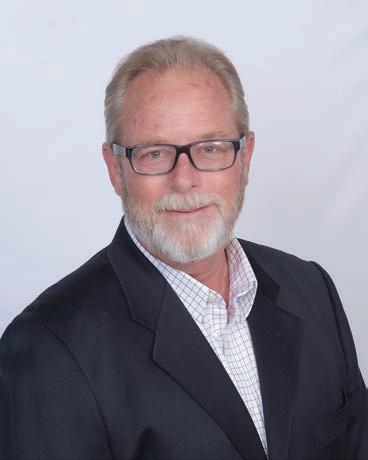






a “hub for pro-business policies” located along major highway corridors.
“Douglas County’s pro-business environment, focus on public safety, and dedication to upholding the rule of law make it an excellent choice for relocating SBA’s Colorado District O ce,” Boebert said in the letter. “I am con dent that this move would not only streamline SBA operations, but also strengthen support for small businesses across Colorado and beyond.”
Douglas County Commissioner Abe Laydon agreed that the county would be a natural t for the SBA o ces.
“As the healthiest, safest and most prosperous county in Colorado with the No. 1 school district, we are seeing signi cant interest from all sectors in relocating here, so the SBA would be a welcome addition and a perfect t as Dougco creates new generational wealth for Coloradans,” Laydon said.
e Colorado District O ce is located in the U.S. Customs House at 721 19th St. in Denver.
According to the Denver Post, Rep. Je Crank, a Republican representing southern Colorado in Congress, requested that the SBA regional headquarters be moved to Colorado Springs.
As of March 12, no decision about where the o ces would be relocated had been made.
















BY JOANNE KENEN KFF HEALTH NEWS
Chikao Tsubaki had been having a terrible time.
In his mid-80s, he had a stroke. en lymphoma. en prostate cancer. He was fatigued, isolated, not all that steady on his feet.
en Tsubaki took part in an innovative care initiative that, over four months, sent an occupational therapist, a nurse, and a handy worker to his home to help gure out what he needed to stay safe. In addition to grab bars and rails, the handy worker built a bookshelf so neither Tsubaki nor the books he cherished would topple over when he reached for them.
Reading “is kind of the back door for my cognitive health — my brain exercise,” said Tsubaki, a longtime community college teacher. Now 87, he lives independently and walks a mile and a half almost every day.
e program that helped Tsubaki remain independent, called Community Aging in Place: Advancing Better Living for Elders, or CAPABLE, has been around for 15 years and is o ered in about 65 places across 26 states, including Colorado. It helps people 60 and up, and some younger people with disabilities or limitations, who want to remain at home but have trouble with activities like bathing, dressing or moving around safely. Several published studies have found the program saves money and prevents falls, which the Centers for Disease Control and Prevention says contribute to the deaths of 41,000 older Americans and cost Medicare about $50 billion each year. Despite evidence and accolades, CAPABLE remains small, serving roughly 4,600 people to date. Insurance seldom covers it (although the typical cost of $3,500 to $4,000 per client is less than many health care interventions). Traditional Medicare and most Medicare Advantage private insurance plans don’t cover it. Only four states use funds from Medicaid, the federal-state program for low-income and




gram. CAPABLE doesn’t profess to x all the gaps in U.S. long-term care, and it doesn’t work with all older people. ose with dementia, for example, don’t qualify. But studies show it does help participants live more safely at home with greater mobility. And one study that Szanton co-authored estimated Medicare savings of around $20,000 per person would continue for two years after a CAPABLE intervention.
“To us, it’s so obvious the impact that can be made just in a short amount of time and with a small budget,” said Amy Eschbach, a nurse who has worked with CAPABLE clients in the St. Louis area, where a Medicare Advantage plan covers CAPABLE. at St. Louis program caps spending on home modi cations at $1,300 a person.
disabled people. CAPABLE gets by on a patchwork of grants from places like state agencies for aging and philanthropies.
e payment obstacles are an object lesson in how insurers, including Medicare, are built around paying for doctors and hospitals treating people who are injured or sick — not around community services that keep people healthy. Medicare has billing codes for treating a broken hip, but not for avoiding one, let alone for something like having a handy person “tack down loose carpet near stairs.”
And while keeping someone alive longer may be a desirable outcome, it’s not necessarily counted as savings under federal budget rules. A 2017 Centers for Medicare & Medicaid Services evaluation found that CAPABLE had high satisfaction rates and some savings. But its limited size made it hard to assess the longterm economic impact.
It’s unclear how the Trump administration will approach senior care.
e barriers to broader state or federal nancing are frustrating, said Sarah Szan-


ton, who helped create CAPABLE while working as a nurse practitioner doing home visits in west Baltimore. Some patients struggled to reach the door to open it for her. One tossed keys to her out of a second-story window, she recalled. Seeking a solution, Szanton discovered a program called ABLE, which brought an occupational therapist and a handy worker to the home. Inspired by its success, Szanton developed CAPABLE, which added a nurse to check on medications, pain, and mental well-being, and do things like help participants communicate with doctors. It began in 2008. Szanton since 2021 has been the dean of Johns Hopkins University School of Nursing, which coordinates research on CAPABLE. e model is participatory, with the client and care team “problem-solving and brainstorming together,” said Amanda Goodenow, an occupational therapist who worked in hospitals and traditional home health before joining CAPABLE in Denver, where she also works for the CAPABLE National Center, the nonpro t that runs the pro-
Both Hill sta and CMS experts who have looked at CAPABLE do see potential routes to broader coverage. One senior Democratic House aide, who asked not to be identi ed because they were not allowed to speak publicly, said Medicare would have to establish careful parameters. For instance, CMS would have to decide which bene ciaries would be eligible. Everyone in Medicare? Or only those with low incomes? Could Medicare somehow ensure that only necessary home modi cations are made — and that unscrupulous contractors don’t try to extract the equivalent of a “copay” or “deductible” from clients?
Szanton said there are safeguards and more could be built in. For instance, it’s the therapists like Goodenow, not the handy workers, who put in the work orders to stay on budget.
For Tsubaki, whose books are not only shelved but organized by topic, the bene ts have endured.
“I became more independent. I’m able to handle most of my activities. I go shopping, to the library, and so forth,” he said. His pace is slow, he acknowledged. But he gets there.
KFF Health News is a national newsroom that produces in-depth journalism about health issues and is one of the core operating programs at KFF — an independent source of health policy research, polling, and journalism.





BY HAYLEE MAY CPR NEWS
Colorado senators Michael Bennet and John Hickenlooper joined more than 20 other U.S. senators in penning a letter to the Secretary of Defense this month demanding answers about apparent underinvestment in food options for members of the military.
e letter followed an investigation by Military.com that revealed millions of dollars taken from soldiers’ wages for food allowance was spent elsewhere.
“Our national security depends on a strong military. e Department of Defense needs to address the troubling reports of food access issues on military bases and support base leadership to resolve them,” said Hickenlooper in a statement to CPR News. “Our service members, like those stationed at Fort Carson, deserve consistent and high-quality meals.”
e military news organization began its investigation following reports of a lack of food and low food quality at several Army posts across the nation – including at Fort Carson, where soldiers reported receiving meals lacking in nutritional value in 2024. Photos of meals obtained by CPR News showed a soldier being served a meal of lima beans and toast, far below the nutritional value standards set for Army troops.
Each enlisted service member living in the barracks at Fort Carson has a “Basic Allowance for Subsistence” deduction of $460.25 per month, which is meant to pay for their breakfast, lunch and dinner daily. Many troops make less than $30,000 a year as junior enlisted soldiers and do not have access to kitchen equipment in their
shared living quarters.
“Senator Bennet believes that service members who dedicate their lives to protecting our country deserve access to high-quality and nutritious meals every day,” Bennet’s o ce said in a statement. “It is inexcusable for our service members to pay hundreds of dollars a month for their meals and then experience food shortages or be served poor-quality food with no alternatives. Our military readiness is jeopardized if they cannot access the basic nutrition they need.”
According to the Military.com investigation, of the $22 million collected in BAS deductions from troops at the post south of Colorado Springs last year, only $5 million dollars actually went toward food they could access at dining facilities. It is unclear where the unused money was spent.
“ e ndings, which include 2024nancial records from eleven of the largest Army installations, show that more than $151 million of the $225 million in [subsistence funds] collected from servicemembers on these installations was not spent on food costs,” the letter from senators reads. “ at gure does not include the additional garrisons under the Army’s control, nor does it include spending at installations managed by the other military services suggesting the issue may be much more widespread.”


e group of senators want Secretary of Defense Pete Hegseth to detail how the DOD is making decisions about on-post food service operations, what barriers the military is facing to provide healthy meals to troops, and what his plan is to improve food quality on military bases.
“If a servicemember is losing money



from their paycheck because they are being given a meal, it is reasonable for them to expect that funding will be used only to cover the costs of providing it and to ensure it is of the highest possible quality,” the letter reads. “We trust you will move expeditiously to answer our inquiries.”


Most new recruits stationed at Fort Carson are required to spend their rst two to three years in service living in the barracks with up to 8,000 troops housed there at any given time.


A Fort Carson o cial said in December that 4,633 of those recruits are meal card holders who rely on dining facilities. is story is from CPR News, a nonpro t public broadcaster serving Colorado. Used by permission. For more, and to support Colorado Public Radio, visit cpr.org.






BY JENNIFER BROWN THE COLORADO SUN
A new federal program that provides grocery money in the summer for kids who qualify for free lunch at school could feed an estimated additional 67,000 kids. Yet here’s how many applications for the summer food assistance program Colorado received last summer — 25. It’s not as bad as it sounds, as more than 550,000 students in Colorado were automatically enrolled in the summer food program, which meant their families received a grocery card loaded with $120 per child, or $40 per month.
ose who automatically quali ed for the program, called Summer EBT, included families who had submitted paperwork to receive free or reduced-price school lunch or applied for monthly food assistance bene ts. Children in foster care are automatically eligible, as are kids who are homeless or migrants — if their families already quali ed for free school lunch or monthly food assistance.
Still, an estimated 67,000 children across the state missed out on the program because their families would have had to apply and did not know that, according to an analysis by an independent consultant. at adds up to about $8 million in federal funds that Colorado didn’t tap into last summer.
State o cials are hoping to reach more kids this summer, the second year of the federal program.
e summer food assistance program grew out of a COVID-era plan, called the Pandemic Electronic Bene t Transfer, approved by Congress to provide grocery money to families while their children were not attending in-person school.
Students whose families need to apply for the summer bene t include those who do not have up-to-date household income data on le with their school. is is particularly an issue for families who qualify for free and reduced-price lunch but don’t ll out the paperwork because their children attend a school where everyone gets free lunch.
At schools where a majority of the students qualify for free lunch, a measure of poverty, every student can receive free lunch under what the federal government calls “community eligibility.”
New residents of Colorado, or those who enrolled in the free-lunch program after their school submitted its yearly eligibility paperwork, also were not automatically enrolled in the summer food program.
“Only a small number of students need to apply in order to get bene ts,” AnneMa-



rie Harper, communications director for the Colorado Department of Human Services said via email. e department declined to give an interview in response to e Sun’s questions about why the state didn’t reach more children last year.
e state would not estimate how many eligible children need to apply for the program, saying it was too new for state o cials to have a “comprehensive estimate.”
But a public policy expert who has studied the issue nationally found that among the dozen states he queried, Colorado had the lowest percentage of applications from eligible families.
“Millions of dollars never made it to the group of eligible families that are required to submit an online application,” said David Rubel, a New York public policy consultant. “Very few families in Colorado submitted the application.”
He’s concerned that $500 million nationwide — including an estimated $8 million in Colorado — will go unused by states and returned to the federal government, which is similar to what happened last year.
According to his research, just 0.003% of the 67,400 Colorado children whose


families would have been eligible had they submitted the application actually did so.
e average of the 12 states Rubel researched was 6.4%, meaning 4 million eligible families did not submit applications. He deduced the number of eligible children in each state by using U.S. Department of Agriculture estimates stating that about 20% of eligible children would have to apply for the program, while 80% would have already enrolled in some other program that made them automatically eligible.
e Department of Agriculture also had estimated that Colorado would have 337,000 eligible children in all — but the state instead found 550,000.
A major issue last summer was timing.
Following federal approval, states had just two months in which to accept applications, which meant little time to advertise. is year, though, states have several months to let people know about the program. e application “will be live on the website in the coming weeks,” Harper said.
Before the state mailed bene ts cards last summer, state o cials had to identify the 550,000 children who automati-

cally quali ed for the program and had to coordinate with schools to get mailing addresses for those families. Cards were mailed out across the country last summer, though some did not arrive until August.
Colorado last year advertised the program with a website and posters, iers and social media posts in English and Spanish. Harper said the state “continues to focus our e orts on building awareness of the program,” including by hosting town hall and “road show” presentations and partnering with the Family Resource Center Association, which has 32 locations in Colorado.
“For the students who were enrolled last year and remain eligible this year, CDHS will simply re ll their cards,” she said. “At the end of last year’s program, we asked students and families to hold on to their bene t cards so we could do just that.” is summer’s program is already authorized in the federal budget and has not been targeted in the Trump administration’s spending cutbacks. is story was printed through a news sharing agreement with e Colorado Sun, a journalist-owned nonpro t based in Denver that covers the state.
BY ROBERT DAVIS COLORADO NEWSLINE
A broad coalition of transparency advocates plans to submit a ballot initiative in 2026 to amend Colorado’s constitution and strengthen public access to government records.
e initiative is led by Jon Caldara of the Denver-based Independence Institute, a Libertarian think tank. Fifty groups are part of the coalition, some of which have historically held little shared political ground. ey include as the Rocky Mountain Voice, League of Women Voters, the Colorado Press Association, the Colorado Freedom of Information Coalition, and several others.
e nal draft of the ballot measure is still being worked out. Even so, Je rey Roberts, executive director of the Colorado Freedom of Information Coalition, told Newsline that it will address a range of issues, from the cost of public records to establishing a uniform right to access government records and addressing open meeting law requirements.
“Everybody needs to know what their government is doing,” Roberts said. e group has been meeting monthly, both on Zoom and at the Independence Institute, to discuss how to address the transparency issues at the State Capitol. One law that has united the group is Senate Bill 24-157, which was passed by the Democratcontrolled Legislature in 2024. e bill created exemptions to the state open meetings law for written and electronic communications among lawmakers.
SB-157 was passed after a judge ordered Democrats to stop using a secret electronic voting system, also known as quadratic voting, to decide which bills to debate. e judge said the system appeared to be set up to abide by the open meetings law but violated its spirit.
Transparency advocates asked lawmakers to repeal the exemptions before the 2025 session convened, but nding the right coalition of lawmakers has been di cult, because they are basically asking lawmakers to police themselves, Tim Regan-Porter, CEO of the Colorado Press Association, told Newsline.
Regan-Porter added that government transparency and the public’s ability to access government records has been steadily declining over the last several years. Part of the issue is that bad-faith actors have tried to ood public records o ces with requests, he said. e cost of public records
— which currently sits at $41.37 per hour — has also become a concern for many media organizations, and has compounded the economic challenges media organizations in Colorado face, Regan-Porter added.
“Sometimes things go unreported because we don’t have access to the data, and we should be making it easier for reporters and the public to be able to know what’s going on,” Regan-Porter said.
Beth Hendrix, executive director of the League of Women Voters, told Newsline that the “right to know” initiative is about more than protecting journalists and the media. It’s also about ensuring voters remain informed about what their elected ofcials are doing, and making sure the issues voters care about are being addressed.
“A democracy works best when everyone’s involved, when everyone is voting and discussing and debating,” Hendrix told Newsline.
Multiple bills introduced during the 2025 session would further limit government transparency. For instance, HB25-1041 sought to exempt student-athlete name, image and likeness agreements from the Colorado Open Records Act before it was amended to apply only to personally identi able information.
Lawmakers have also advanced Senate Bill 25-77, a bill to extend the timeline for responses to open records requests from three days to ve. e bill would also require agencies to accept electronic payments for CORA requests and a breakdown of all costs and fees levied as part of a response. It is sponsored by a bipartisan coalition including Democratic Sen. Cathy Kipp of Fort Collins and Republican Sen. Janice Rich of Grand Junction as well as Democratic Rep. Michael Carter of Boulder and Republican Rep. Matt Soper of Delta.
Republican lawmakers Lori Garcia Sander of Eaton and Byron Pelton of Sterling introduced House Bill 25-1242, a bill that would undo the open meeting law exemptions that were passed in 2024. However, the bill had no Democratic co-sponsors and was assigned to the House State, Civic, Military & Veterans A airs committee, otherwise known as the “kill committee.” e committee on Monday voted 8-3 against the bill, and it was postponed inde nitely.
e bills introduced by Kipp, Garcia Sander, and Pelton had their rst hearing Monday. During the hearing, Soper said SB-77 seeks to clean up a couple of provi-


sions in CORA that are di cult for smaller public agencies to abide by. He said small organizations like the Delta County Memorial Hospital District — the board of which Soper sits on — often cannot respond to records requests within three days. Also, it also clari es the procedure for responding to requests when an agency records custodian is out of the o ce.
Carter said he does not intend for SB-77 to be used to attack legitimate records requests from the news media and Colorado citizens. Soper added that the bill treats news media separate from requesters using the information for “pecuniary gain,” because records requests from news media tend to be limited in scope and easier to respond to.
People opposed to the bill pushed back against SB-77’s carve-out for news media organizations, arguing that it discourages citizen journalists from submitting records requests. Cory Gaines, who writes a Substack blog called the Colorado Accountability Project, added that it makes some bad assumptions about the responsiveness of records custodians.
“I shouldn’t be treated as a second-class requester when my taxes pay the bills in this state,” Gaines said.
Heather Stau er, Colorado Municipal League legislative advocacy manager, argued that SB-77 should treat all requesting entities the same, meaning there should be no carve-out for the news media. Stau er added that the bill would provide some “much needed exibility” to governments to respond to records requests.
SB-77 was amended to clarify when custodians can deny records requests, and it passed the committee by a vote of 8-3. It will be heard next by the full House.
Garcia Sander said HB-1242 was needed because lawmakers adopted exemptions for themselves to the state’s open meeting law in 2024. She cited examples of how the law has been misused to shield lawmakers from scrutiny like when journalists with e Colorado Sun were not allowed to attend a virtual caucus meeting and debates over property taxes before last year’s special session.
“ is is our chance to restore public trust,” Garcia Sander said. “Transparency is not a Republican or Democrat issue.”
Lawmakers on the committee argued that the bill could make their jobs more di cult. Democratic Rep. Chad Cli ord argued that the 2024 open meeting law revisions allowed lawmakers to have private conversations that are similar to executive sessions that local governments can have. He added that he “has never seen something as open” as Colorado’s 120-day legislative session.
Democratic Rep. Cecelia Espenoza of Denver said the private conversations can be used to compromise on issues.
Caldera said the objections raised were “non-issues.” He added that the bill is not designed to limit private conversations between lawmakers. It is intended to ensure that meetings between lawmakers that are subject to the open meeting law remain open to the public.
“ e public is begging for transparency and accountability,” Republican Rep. Brandi Bradley of Littleton said. “I don’t love getting CORA requests, but it holds me accountable. It keeps me on my toes.” is story is from Colorado Newsline. Used by permission. For more, and to support the news organization, visit coloradonewsline. com.




Today I want to share an insight for those who are seeking to provide encouragement rather than nd encouragement. I mention this idea because one of the most important things that we can do to help ourselves cope with our struggles is to help others. Truly, looking to grow as an encourager is important for everyone.
When I was about eight or nine years old, our family was driving somewhere early in the morning. My parents were in the front seat, and my sister Karen and I were in the back. While driving down a tree-lined street, suddenly, two squirrels leapt into the middle of the road, chasing each other, unaware of our car. eir sprint into the lane was so sudden that although Dad tried to slow down, there was no way for him to keep from hitting both squirrels. I remember both the sound of the animals hitting the car and the utterances of angst coming from my father.
I turned around to look out the back window at the squirrels we had just hit and noticed that one of them had gotten up and



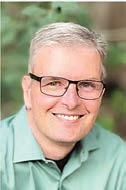
was limping out of the street. I excitedly told Dad that one of the squirrels was OK and was moving. I knew he was still disturbed by having hit the animals so after a short time, maybe a quarter- to a half-mile of driving, I announced to the car, “look the other squirrel is getting up.” My 6-year-old sister understood there was no physical way I could have seen the squirrel and she said so loud enough for everyone to hear. inking I was both older and wiser, I quietly told her to hush, hoping my tale would help Dad.
My 8-year-old self was lying, trying to bring encouragement, creating a narrative that would make everything OK.
Fifty years later, when I re ect on both that day with my family and the lessons I learned supporting my friends Shane and Summer
as they navigated his cancer diagnosis, I see things much di erently. I understand that being an encourager does not mean creating a false narrative for someone. I could not make things better by fabricating a story for Dad or spinning a tale for Shane that did not acknowledge their reality.
I also understand that being an encouragement means, rst and foremost, standing resolutely with the person who needs support. Sometimes, it means being a sounding board or a safe place to share deepest fears without concern that those will be articulated to others.
It can mean being a cheerleader, someone who can inspire one more step or can mean acknowledging a di cult reality without falling into a mire of despair. Most of the time, being an encourager is about being consistent, a xed point that a person tossed by life’s waves can count on. It always means being genuine and leaning into our personal strengths to bring support.
With age and experience, I now see that most of the time, we cannot make everything OK. But that does not mean we are
ompanies are often forced to move at breakneck speeds in today’s world of accelerated technological advancements and rapid market evolution. It’s no longer uncommon to see organizations launch products and services before they’re fully re ned, sometimes even before the infrastructure to support them is entirely in place. is has led to a popular business analogy: xing the plane while it’s already in the air. ere are several companies that exempli ed this approach over the past two decades and still achieved overwhelming success. From their inception, they disrupted the industries they served, never really launching with a fully formed model. Regulatory challenges, operational inconsistencies, and technological re nements were all addressed in real-time. Yet, despite turbulence, these high- ying companies soared to global prominence. eir success was not just about speed but about having the right people on board, people who could handle the chaos, make critical decisions, and innovate in the face of uncertainty. When a company moves so quickly, the people in that proverbial plane fall into four categories.

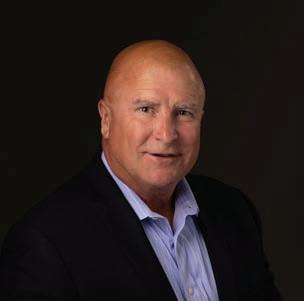
e Ground Crew: Lastly, leaders, advisors, and mentors may not be on the plane but play an equally crucial role in keeping it airborne. ese are the “go-to” people, trusted guides with experience navigating similar challenges. Too often, fast-growing organizations fail to lean on these external advisors, missing valuable insights that could make the journey smoother and more strategic.
Other metaphors illustrate the same reality of moving forward at full speed:
e train has left the station, meaning you’re either on board or left behind on the platform, waving goodbye. ere’s no time to second-guess or hesitate.
e horse is out of the barn, implying it’s too late to reverse course; now, the focus must be on nishing the race and nishing well.
Dhelpless. Someone providing from their heart, in the most di cult of times, is the encouragement we each need at some moment.
In your struggle do not forget to nd the opportunity to be the encourager.
You’ve got this.
I hope my words encourage you, and that you will share them with those who need support. ank you to everyone who has shared their stories with me so far; I truly appreciate hearing about the valuable ideas you nd in these columns and how you use them to uplift those around you.
Jim Roome lives in Arvada with his wife Beth. He spent 34 years in public education. Lessons learned from the one two punch of being diagnosed with MS shortly before his best friend was diagnosed with terminal cancer led him into a new pursuit as a freelance writer and speaker. He uses his life experiences and love of stories to inspire, educate and encourage local, national and international audiences. Contact him at jim. roome@gmail.com.
ouglas County older adults and those who support them are invited to learn about the various activities available at the Highlands Ranch Senior Center, as well as tour the new facility that just opened in January. is event is on April 3 from 10-11:30 a.m.

e Parachuters: Some individuals don’t have the stomach for rapid change and uncertainty. As turbulence hits, they reach for the parachute, opting to leave rather than face the unknown. And that’s okay. Not everyone is cut out for high-growth, highpressure environments. Leaders should recognize this and let them go rather than trying to force a t.
e Frozen: Another group remains in their seats, gripping the armrests, hoping the storm will pass without requiring their direct involvement. ey may not leave but don’t contribute meaningfully to the solution. While these individuals might not cause immediate harm, their inaction can slow progress. If the plane does land safely, leaders must assess whether these employees can adapt to a culture that demands agility and resilience.
e Fixers: e fearless problem-solvers will tether themselves to the plane and climb onto the wing to x what’s broken. ese individuals thrive in chaos, nd solutions in the most uncertain situations, and are willing to take calculated risks to ensure success. ey are the innovators, the strategists, and the culture carriers who propel a company forward. Without them, high-growth organizations would stall mid- ight.
e genie is out of the bottle, representing the unstoppable force of technological advancements, particularly AI, which will continue to shape our future whether we’re ready or not.
e fundamental question for leaders is: Do we have the right people on this plane, people willing to x and help y it to our goals? Equally important, are we, as individuals, committed to the mission? Do we have the passion, resilience, and willingness to be part of a team destined for greatness?
In an era where technology is evolving faster than we can predict, the key to success is not avoiding turbulence but embracing it with the right team. ose who can adapt, problem-solve, and remain agile will keep the plane in the air and take it to new heights.
How about you? Are you or someone you know a part of a growth-oriented and results-focused organization that may not be fully baked? I would love to hear your story at gotonorton@gmail.com. And when we experience and embrace the thrill of such a ride, it really will be a better-than-good life.
Michael Norton is an author, a personal and professional coach, consultant, trainer, encourager and motivator of individuals and businesses, working with organizations and associations across multiple industries.

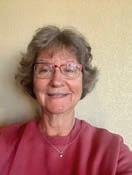

Seniors’ Council of Douglas County (SCDC) meetings are free and open to the public.
Jill Hall, senior services manager, will host the visit at the Senior Center located at 200 E. Highlands Ranch Parkway. According to Hall, “We are delighted to showcase the new Highlands Ranch Senior Center. Since its opening in early January, we have had hundreds of older adults tour the center and sign up for activities. A dedicated center is crucial to combating loneliness and social isolation while providing meaning and purpose to the lives of older adult.
“
e Highlands Ranch Senior Center will be the location for the Seniors’ Council of Douglas County signature all-day educational event, Vintage and Vibrant 2025, on Wednesday, Sept. 17. Vintage and Vibrant 2025 will be a high-quality event with various sessions aimed at older adults and service providers. Opportunities to partner with SCDC are available to interested service providers and supporters.
In other news, April is National Volunteer Month and a great time to consider becoming involved in a new activity. For example, Douglas County Libraries o er a myriad of volunteer roles including reading to young children, assisting with literacy programs, and ensuring books are neatly organized. Go to dcl.org to browse opportunities at the various county libraries.
e hospitals in Douglas County provide interesting volunteer positions ranging from working in the gift shop to greeting visitors. Check the website of a hospital near you or call for information. e Highlands Ranch Senior Center and SCDC also o er volunteer roles.
According to Mayo Clinic, volunteers reap many physical and mental bene ts while contributing to the community. Visit the Seniors’ Council page on the Douglas County website, douglas.co.us, and search for Seniors’ Çouncil for information and updates or call Douglas County Community Services at 303-688-4825. SCDC promotes Living Well / Aging Well.
is guest column was written by Jean Spahr, the publicity chair of Seniors’ Council of Douglas County.

Trump is a disaster
I’m wondering if you MAGA supporters and other misguided souls supporting Trump are rueing the day you voted for that idiot in November. is includes minorities as well as individuals across the religious spectrum.
Has in ation lessened yet? Is the stock market exhibiting strong gains? Are we hopeful we’ll avoid a recession? Do tari s really punish the countries exporting their goods to us?
Anyone except for a pea brain knows the answers to those questions.
We have a person in o ce who is completely unquali ed along with being racist, misogynistic, and probably su ering from the beginning stages of dementia. He is a hateful, narcissistic person with a total lack of empathy for anyone.
I’m not very hopeful that many of you will be swayed by anything I’ve said but maybe you’ll think about what’s happening to this country.
Lawrence Sena , Castle Rock
Remember Enola Gay
eir names were Mamie, Amy, Gladys and several other daughters- and sistersin-law born from 1890 to about 1910. One was my Aunt Gay. Her husband, uncle Doc, was the next oldest brother to my mother, Amy, and both lived to the age of 97.
About a thousand miles west of my home state of West Virginia lived a young woman by the name of Enola Gay Tibbets. Her son, Paul Tibbets, born in 1915, grew up to be one of the premier bomber pilots of WWII. He was chosen to drop the rst atomic bomb on Japan and named his B-29 bomber Enola Gay after his mother. What an honor for his mother. is one bomb, and another dropped by a di erent B-29 bomber days later, ended WWII, saving hundreds of thousands of lives.
eir names are Lauren, Gabe, Abe, George, Kevin and several other Douglas County Republican elected o cials who have the power and support of the majority of Douglas County residents to put an end to the sickness that has invaded our nation’s capital. ey support the sick Trump/Musk administration, which made a decision to purge the name Enola Gay from our history. is is not about purging a name from our history, but purging a “woman’s name” from the most famous aircraft in American history. Many people would call this woman hating.
e name is Enola Gay, wife, mother and daughter.
Roy Legg, Highlands Ranch
Library board disappointment
disproportionately impacts marginalized voices that deserve to be heard. By appointing board members who advocate for book removal (I consider “asking for books to be removed” equating to book banning though I read that Windju does not consider removing to be banning), the message being sent is that certain ideas are not welcome in our community — a dangerous precedent that compromises the rights of readers and the integrity of the library system. e freedom to read is a fundamental principle that must be protected, especially in a time when diverse representation and access to information are so important.

I sent an email to the county commissioner for my district, Abe Laydon, urging him to reconsider these appointments and prioritize board members who are committed to upholding the library’s mission of inclusivity, intellectual freedom, and access to information. Our community deserves leadership that champions open access to knowledge rather than restricting it. At the time of this letter submission, I have not heard back from any commissioners.
Reform defects law


Kalley Sadler, Lone Tree
e Government A airs Committee (GAC) of the Parker Chamber has made our local elected o cials aware of our support for House Bill 1272. If you’re a person in our community who cares about attainable housing for those in the “middle market” of homebuyers, then we encourage you to support the socalled “Construction Defects and Middle Market Housing” bill making its way through the state legislature.

I am disappointed in the recent appointments of Amy Windju and Pam Hampton to the Douglas County Library Board by County Commissioner George Teal. As an avid reader, committed supporter of intellectual freedom and access to diverse information and frequent library visitor, I am troubled by the decision to appoint an individual who has publicly expressed support for removing books from library shelves. Appointments like this risk undermining the core mission of our public libraries — to provide free and open access to information for all members of the community. Libraries play an essential role in fostering education, critical thinking, and inclusivity. ey are one of the few remaining spaces where individuals can explore ideas, learn from di erent perspectives, and engage in thoughtful dialogue. Censorship in any form threatens the very foundation of this purpose and
Everyone agrees, we need more housing volume in the Denver Metro area, particularly condominiums and other multi-family projects that make home ownership possible for young professionals and working families. While this bill isn’t perfect — and in our minds could be much stronger — it represents the best opportunity we’ve had in more than a decade to reinvigorate the development of this critical missing piece of the local housing market.
Under current law, it’s far too easy to sue developers of these projects. e resulting insurance costs make midmarket housing projects untenable. Bill 1272 puts additional quality checks on builders while raising thresholds for legal action against builders. e bill asks something from both sides, and no one is entirely happy with it. at means it’s a step in the right direction.

e bill has bipartisan support, the support of the governor and the Senate president, and endorsements from most state chambers. Even if 1272 passes into law, it will take time for the insurance industry to catch up, bring costs in line, and incentivize builders. More action is needed, but 1272 swings the regulatory pendulum back toward home ownership for an entire generation currently priced out.

We urge citizens to learn about the issue and support the bill in communications to our local elected o cials. For teachers, cops, service and healthcare workers, and so many others, the success of this bill is a long-term play in the right direction.
T.J. Sullivan, president and CEO
Brian McWilliams, chair, Government A airs Committee Parker Chamber of Commerce































A publication of
Call first: 115 Wilcox St., Suite 220, Castle Rock, CO 80104
Mailing Address:
750 W. Hampden Ave., Suite 225 Englewood, CO 80110
Phone: 303-566-4100
Web: LoneTreeVoice.net
To subscribe call 303-566-4100 or Scan this QR Code

BROOKE WARNER
Executive Director brooke@ntln.org
LINDA SHAPLEY Director of Editorial & Audience lshapley@coloradocommunitymedia.com
CHRISTY STEADMAN South Metro Editor csteadman@coloradocommunitymedia.com
TAYLER SHAW Community Editor tshaw@coloradocommunitymedia.com
ERIN ADDENBROOKE Marketing Consultant eaddenbrooke@coloradocommunitymedia.com
LINDSAY NICOLETTI Operations/ Circulation Manager lnicoletti@coloradocommunitymedia.com
BUSINESS INQUIRIES
For advertiser or vendor questions, please email our business department at accounting@ coloradocommunitymedia.com
Columnists & Guest Commentaries
Columnist opinions are not necessarily those of the Voice.
We welcome letters to the editor. Please include your full name, address and the best number to reach you by telephone.
Email letters to letters@coloradocommunitymedia.com Deadline
Tues. for the following week’s paper.
Lone Tree Voice
A legal newspaper of general circulation in Lone Tree, Colorado, the Voice is published weekly on Thursday by Colorado Community Media, 115 Wilcox St., Suite 220, Castle Rock, CO 80104.
Send address change to: Lone Tree Voice, 750 W. Hampden Ave., Suite 225, Englewood, CO 80110
BY SHARON SULLIVAN COLORADO NEWSLINE
A young and persuasive salesperson came to Grand Junction resident Brandon Keen’s home last summer selling residential rooftop solar systems. Keen was interested in solar, so he listened to the salesperson’s spiel.
Keen said the Go Brite Solar salesperson told him that a Colorado grant would pay for the solar panels and installation and that Our World Energy, a solar company headquartered in Arizona, with locations in Colorado, New Mexico and Texas, was one of only a few companies approved to install the system. Keen signed up to lease the panels.
Go Brite Solar, with locations in multiple states, is a “sales only” company that solicits solar systems door-to-door then sells the contracts to a solar installation company like Our World Energy.
Go Brite Solar’s website states “Hint: We don’t work for solar companies, we work for you.”
After signing a contract, Keen learned from a neighbor who had his solar panels installed by a longtime local company that the solar incentives are not grants but, instead, a collection of state and federal tax credits for people who owe taxes. And that’s only with a purchase — not lease — of the solar. When a person leases the solar panels, the tax credit goes to the lending institution nancing the project. Some utility providers o er rebates for solar as well.
Keen also learned that any certi ed solar company could do the installation. He canceled his contract with Our World Energy.
“It was a brokerage group that came to our door,” Keen, 38, said. “We were tricked on how he presented it. I’m not sure if he understood the incentive program.”
Colorado Newsline attempted to reach Go Brite Solar for comment by calling both of the phone numbers listed on its website. One number reached an answering machine for Utah Online School, according to the greeting. Messages left by a reporter were not returned. A man answered a call to the second number, identifying as Cove Home Security, a company in Draper, Utah.
In recent years there’s been an uptick in Colorado, and across the nation, in door-todoor solar “sales only” solicitors accused of predatory and misleading practices. ey’re solar brokers who then sell the contracts to solar installation companies — some of whom have gone out of business or moved, leaving customers stranded when a problem arises or with incomplete systems.
e o ce of Attorney General Phil Weiser would not con rm or otherwise comment on any potential investigations into deceptive solar sales practices, said AG spokesperson Elliot Goldbaum.
Consumer protection legislation

25 years.
However, Juntilla’s solar system would not have been free — instead, it would have been nanced over a period of years with no upfront costs. Customers pay a monthly fee, basically trading a utility bill for a nance payment.
Juntilla said he felt pressured to decide quickly, because he was told that his utility provider Grand Valley Power would allow only a certain percentage of homes in his subdivision to install solar systems. However, when Juntilla contacted the electric cooperative he was told that was not the case.
Grand Valley Power is a member of Colorado Rural Electric Association, a nonpro t that represents and serves 21 Colorado electric co-ops. Grand Valley Power spokesperson Rita Sanders said Grand Valley Power does not currently restrict, or in the past restricted, anyone from installing solar due to system capacity. However, that could change in the future if local solar generation meets or exceeds demand in the same area, which poses challenges to maintaining a safe and reliable grid, Sanders said in an email to Newsline.
Juntilla also learned that Our World Energy had pulled a building permit for his property from the Mesa County Building Department, without his permission.
“ ere was no mention of doing that during the sales pitch,” Juntilla said. “I didn’t sign anything. It really irritated me. It seems unscrupulous not to notify me.”

contacted local media Ion Solar stopped the practice.
However, other companies in the San Isabel area continue to mislead residents, Daugherty said. She said it’s di cult to confront the sales associates, because they do not wear clothing identifying who they work for, they drive vehicles without a business logo, and they do not give out business cards.
“It’s di cult to gure out what company they’re working for,” she said.
It’s not just sales-only companies that are engaging in misleading sales practices. ere are also y-by-night installers who do not nish installations they were hired to do, Daugherty said.
“ ere is tremendous opportunity for solar in southern Colorado. In our area there are a wide range of installers and sales companies that do great work. ( e unethical companies) are ruining it for reputable businesses.”
Scams increasing
Both the declining cost of solar, and the availability of incentives o ered by the federal government — whose goal during the Biden administration was to transition to a 100% carbon-free electric grid by 2035 — has led to an increase in solar sales in recent years. Solar accounted for 40% of all new electric generating capacity in 2019 in the country.

Colorado Trust for Local News asks readers to make us aware of mistakes we may have made.
Email linda@cotln.org if you notice a possible error you would like us to take a look at.

e Colorado Solar and Storage Association expects to support consumer protection legislation at the Colorado Legislature in the coming weeks. e consumer protection bill, if it’s introduced, would provide guidelines not only for sales-only companies but also for solar installation businesses.
“We’re tired of seeing unethical people selling solar in Colorado,” said Mike Kruger, the COSSA CEO and president. “ e bill will put up guardrails, and spell out expectations for behavior of salespersons.”
Grand Junction resident Ted Juntilla, 68, is a disabled military veteran who had been considering solar when a person selling for Our World Energy came to his door in June 2024. Juntilla said the salesperson told him that the solar installation would be free and that his utility bills would remain the same for the next
Attempts to reach Our World Energy by phone and email were unsuccessful. A thirdparty agent answered the phone, and told a reporter that someone from the company would call back.
San Isabel Electric is a CREA member based in Pueblo West, serving customers in southern Colorado. San Isabel spokesperson Paris Daugherty said San Isabel receives a lot of calls from its members asking if the co-op is associated with a particular door-to-door salesperson.
“Sometimes (the sales associates) say they are San Isabel Electric and want to inspect the meter,” Daugherty said. “It’s frustrating to us. We do not do door-to-door meter inspections.”
San Isabel Electric told Ion Solar, headquartered in Provo, Utah, that it was misrepresenting itself by saying it was with the electric coop, and that it was impersonating the co-op, which is a crime. She said that after San Isabel
“Solar scams usually happen door-to-door, and ramp up when there are incentives like there are currently,” said Mark Fetterho , program manager for AARP ElderWatch, a consumer watchdog group that has partnered with the Colorado attorney general’s o ce for 20 years. “It’s an opportunity for misinformation. People take advantage of it.”
Fetterho said both solar and home alarm companies are commonly tied to door-todoor sales scams occurring nationwide.
In November 2023, a Time magazine report described how door-to-door sales associates across the country often tell consumers they can get free panels from the government, which is not true. Consumers are told there are tax credits, though the credits are only for those who owe taxes. And they’re told they can eliminate their energy bill, which is not likely unless they invest in a battery — at a signicant extra cost. In most cases people with solar will still have a small utility bill that allows
their system to be hooked up to the grid.
AARP published an article in September on how to avoid solar scams, and lists a website — brokercheck. nra.org — where consumers can check to learn if a solar broker is licensed. Go Brite Solar is not listed as a licensed broker.
A ‘bro’ sales model
Atlasta Solar Center in Grand Junction, and Empowered Energy Systems in Hotchkiss, are employee-owned solar companies on the Western Slope. Representatives at both companies say they have noted a huge increase in door-todoor sales associates using aggressive and misleading practices.
e associates are often young — 18 to early 30s — and friendly, clean-cut, religious and from Utah, said Lou Villaire, one of the owners of Atlasta Solar Center, a company in business for 45 years.
It’s a “bro model,” a get-rich-quick scheme that has taken hold throughout the United States, Villaire said. e associates have a “red line,” a minimum amount they must sell the job for and any money above that amount they get to pocket. us, they’re incentivized to sell the product for as high as they can, he said.
“Once they sell the contract, they’re done,” Villaire said, adding that contracts are often sold to installers headquartered out-of-state, some of which have gone bankrupt and later reemerge as a new solar business.
Atlasta receives calls every week from people seeking help with getting their solar installation completed, but they’re unable to reach the original installer because the company is no longer in business or has left town, Villaire said.
“I’ve been in the business 20 years and I’ve never seen anything like this year, these tactics,” Villaire said. “We’ve always seen plenty of companies come and go, but this level of deception I’ve never seen.”
Additionally, Villaire noted dozens of cases where consumers were sold solar installations for $5,000 to $10,000 more than what locally-owned solar companies would charge for the same system.
Crawford rancher and farmer Terry Baker said he canceled a deal he made last fall with an out-of-town door-to-door solar sales associate after he learned that he was being charged $10,000 more than what Empowered Energy Systems would have charged. Baker, 63, had signed up, in part, because he was told that without so-
lar, his utility bills could triple in the next few years.
Baker was charged a $1,500 cancellation fee.
“We thought we had plenty of time to back out,” Baker said. “I paid it. I wanted out of the whole thing. I wanted away from it. I’m partly to blame. He was just a young guy, in his 20s. He raced over a lot.”
Danielle Carre, a co-owner at Empowered Energy, said homeowners have been lured into signing contracts only to learn later that they need an electrical upgrade to install the solar, and that the costs will be signi cantly higher. Empowered Energy has also heard from community members that they were told they’d receive tax credits for solar and for replacing their roof. However, federal tax credits only apply to the solar, not roof replacements.
“We’ve been approached by these sales companies but refuse to work with them,” Carre said. “ eir price is in ated. It saddens us that this is happening, because solar is a good thing and these practices give the industry a bad reputation.”
Teddy Aegerter, of Atlasta Solar, said homeowners are sometimes misled about what they are signing. Signatures are often collected on iPads, without any hard copies given to customers, he said.
e sales-only business model is not necessarily a problem itself, said Kruger, the Colorado Solar and Storage Association CEO. Not all business owners are comfortable selling, so they might want to hire someone to do it for them.
Villaire said he considered hiring an outside sales company to sell for Atlasta and was negotiating with someone until he learned what the sales associate would charge customers.
“What stopped me was one of the owners told me the only way they’d do it is if they could put one-third of the price in their pocket,” Villaire said. “For perspective, most sales types of jobs garner a commission of 3 to 6%, not 33%. ey are motivated to go above the red line for the highest price they can.”
Kruger said, “People get into trouble when sales companies make tons of promises, then sell the contract to an installer — promises like ‘you’ll never get a utility bill again,’ or, ‘It will pay for itself in two years.’ ey’re not being honest or truthful. ey’ll say whatever it takes to get a customer’s money.
“One thing is uniform — it’s all designed for a quick sale, and a quick buck.”
is story is from Colorado Newsline. Used by permission. For more, and to support the news organization, visit coloradonewsline.com.
























BY BEN DICKSON AND JACOB QUILL UNIVERSITY OF COLORADO NEWS CORPS
Like most of his coworkers, Chino Dean leaves his University of Colorado maintenance job at 3:30 p.m. After work, however, he puts on a di erent face to excel at what he does in his second life. Dean is the champion of the 122-pound Muay ai division in Sparta FC. He’s only been training in martial arts for the past eight years and has been an Easton Training Center athlete for the entire time.
While primarily based in Boulder — where he began training in 2016 and started coaching in 2019 — Dean now teaches three classes each week. is has enabled him to branch out to other Easton locations, now guest coaching in Longmont, and planning to do the same at the company’s other gyms in the metro area. In terms of his own training, Dean nds himself mostly in Boulder, but he makes time to train with Easton’s competition team in both the Arvada and Denver locations
once every other week.
“We have a massive amount of people here from all walks of life,” Dean said about the gym “I’ll never run out of things to learn about the world through these people at Easton.”
Starting in Denver in the 1990s as a barely controlled brawl, ultimate ghting and combat sports has grown into a huge business as a mainstream sports league. Training centers like Easton have helped build that next generation of star athletes.
A champion’s journey
Originally, Dean moved to Colorado in search of a change of pace from his life on the East Coast. He had some friends in the area, and was attracted to the idea of leading an active lifestyle. Boulder’s access to a wide range of outdoor activities, as well as the scenery, were the main factors that brought Dean to the area.
Dean grew up in Maryland, and when he arrived in Boulder in 2015, his level of experience in martial arts
consisted of exactly one free karate class.
“It was that little desire that every little boy has to want to be a ninja,” he said with a smile. “A long time ago, I got the chance to try out a karate class but never got the chance to follow through with it.”
Although he had little experience with martial arts training in general, the spark from that one class led him onto Easton’s mat after he noticed a UFC ghter trained there while watching an event on TV.
“Just the fact that I got my foot in the door to see what it was like really lit that spark, which stayed within me for several years,” Dean said.
Dean fell in love with Muay ai when he attended an Easton class for the rst time. Early in his training career, he bought a heavy bag to put in his basement when he couldn’t a ord the Easton membership. As soon as he could, he bought the membership and was in the gym six days a week.
SEE TRAINING CENTER, P15
Dean grew into a champion Muay ai ghter for his weight class. Muay ai is a style of martial arts that revolves around striking with sts, feet, knees and elbows. However, Dean is interested in the sport’s more subtle aspects.
“Obviously, ghting is what this sport is. When you’re in the ring, it is a ght. But, there is an art aspect to it that the ais obviously created and gracefully shared with us,” Dean said. “It goes a lot into respect, it goes into trying to be calm and relating those things back into everyday life.”
Now 39, Dean’s Muay ai journey has helped to shift his mindset in his general life, even outside of the gym.
“I’ve become a lot more resilient,” Dean said. “It’s made me accept that I may not always get the things I want to in life, and that gives me a better approach.”
Dean treats his Muay ai training as a second job of sorts. Between training for his own ghts, actually competing, and providing coaching for other Easton members, Dean is a familiar face for people in the Easton community.
“Within even a year of me being here, they had already given me so much,” Dean said. “Not just in technique, but in the community. Just being able to give back to them in any way that I can, whether it be teaching them, showing them by example, or just being a good friend for them, that’s what drives me.”
Easton’s start
Dean’s experience at Easton is similar to many of the stories of people who have found a home there. Founded by Amal Easton in 1998, the chain has grown to nine locations around the state. e community found in the gyms helps to explain how martial arts has seized large segments of the country’s imagination. But that story, once better understood, isn’t merely one of ghts and cage matches. Rather, it’s about respect and self-awareness and a way to think mindfully about life through the lens of those who wish to be enlightened warriors.
Easton trained under the legendary Gracie family in Brazil and started the gym to try and help bring jiu jitsu to the United States.
“ ere were very few jiu jitsu gyms at the time, and I rented out some space in a facility to teach three days a week,” Easton said.
Easton, who has a degree in traditional Chinese medicine, decided that he was more suited to help people as a jiu jitsu instructor as he fell in love with the sport. He grew up in a small New Mexico town and began training in martial arts when he was getting picked on at school.
Easton decided on Colorado as a starting point for his gym because of how many people are active in sports. He is active outside of the gym as well, an avid skier as well as having had a short stint as a surfer. Colorado is known for its culture of individual extreme sports, and Easton knew that it would be a good place for him and his gym to thrive. However, the Easton empire in Colorado today is nearly unrecognizable from its humble beginnings.
“How could you conceive that we would be where we are today?” Easton asked. “I was in King Soopers trying to convince the kid stocking the shelves that he should come and try jiu jitsu. It really was one brick at a time, one student at a time.”
Easton’s original location stands in Boulder. A 10,000-square-foot facility on 32nd Street, it is home to martial arts classes for every age and skill level. Easton believes that the format of martial arts training lends itself to bringing people together, and the story for his gym holds true for that.
“ e community is everything. When most people think about community activities they did, they’d have to go back to high school,” Easton said. “With jiu jitsu, it’s one of the most cohesive groups partly because we have every range of age, socioeconomic diversity, religion and body type.”
While the central location is in Boulder, being in the Denver area means you are never too far from an Easton mat. Satellite locations include facilities in Arvada, Centennial, Lowry, South Denver, the Littleton area, Longmont, Castle Rock and ornton.
Alec Schrum, another Easton ghter, competed in the B-class 142-pound division at the Colorado State Tournament




at the Douglas County Event Center in Castle Rock Feb. 28 to March 2. Early in his career, Schrum has showcased his skills in both jiu jitsu and Muay ai, with plans to transition into mixed martial arts competitions as he continues to grow as a ghter.
Schrum has only been training at Easton since he was a sophomore at CU Boulder. He graduated after the spring of 2024, and already has a few ghts on his record. He is just opening this chapter of his life, but he plans on leaving it open for the future.
“After I’m done competing, I’ll still train. Whether I’m coaching or if it’s just for fun, I’ll be in this for the rest of my life,” Schrum said.
Growing up as a wrestler in Pennsylvania, Schrum knew that he wanted to stay involved in martial arts. As soon as he moved to Colorado, he walked into Easton’s gym and hasn’t looked back.
Combat fighting’s popularity

While Easton’s resume of competition is what he is able to hang his hat on, his new passion stems from being an inspiration to the next generation of martial artists. He has noticed that the children he interacts with in the gym have di erent kinds of role models than those he was accustomed to seeing even just a few years ago.
“Some of those kids are going to get skills and chase that dream, because who they are looking up to now are ghters, not basketball players,” Easton said.
Easton’s Boulder location provides a mixture of the strong community that martial arts can provide and coaching that can compete with the best in the world.
Amid the growing popularity of Muay ai and other martial arts in Colorado, there’s also a rise in high-pro le, unconventional prize ghts on the national stage, such as the recent Mike Tyson vs. Jake Paul boxing match streamed on Net ix.



e world of mixed martial arts would not be what it is today without the impact that the state of Colorado had on it.
e premier MMA organization, the Ultimate Fighting Championship, has its roots here in Denver. In 1993, it held its rst event, UFC 1: e Beginning. e event featured ghts with no judges, no weight classes, and no limits on how long ghts could last. When Easton was training in Rio, he remembers watching early MMA ghts at juice bars in the city.
“MMA was also something that had barely just started,” Easton said. “It was hard not to imagine that being a huge thing here someday.”
Easton’s prediction was likely more accurate than he knew at the time. Now, the UFC has become a mainstream sports league. With public eyes nally falling upon the world of combat sports, Colorado’s martial arts scene has begun to grow as well. At the UFC level, bigname athletes like Justin Gaethje and Rose Namajunas train for their ghts in Denver. ere are even UFC athletes who spend time at Easton locations, like Drew Dober and Curtis Blaydes.
“It’s a di erent era, kind of where a kid can grow up and say, like, I want to be Michael Jordan, or I want to be Jon Jones, they can say this is what I want to do, because they’re chasing a sports superstar that they want to be like. And, you know, a lot of that comes with growing the sport,” Easton said.
He pointed out that while some athletes may evolve into lifelong martial artists, others are driven by the pursuit of fame and fortune in a multi-billiondollar industry.
Easton takes pride in the way that he and the other coaches at his gym teach martial arts, providing focus on the lessons that are important outside of training. By emphasizing the skills and morals, Easton hopes to bring the next generation of ghters into the mainstream.
“We take the role of trying to teach values as a big part of our program, not just trying to raise champions,” Easton said. is story was created by students at the University of Colorado-Boulder’s News Corps, where Colorado Community Media is a media partner.
Disappointed by Van Winkle
I was very discouraged to hear Commissioner Kevin Van Winkle refer to a town hall as a “political trick” in the recent video recording during a Board of County Commissioners meeting. Mr. Van Winkle seems to think that a town hall is “targeting” someone by the people they work for (“Like they did to me”), expressing their opinions.
As we’ve seen locally and now nationally, GOP elected individuals are now being directed to NOT have town halls. I guess they don’t have the courage to hear what their constituents have to say?
elected representative won’t meet with you any other way, what are we the people supposed to do when we disagree with what they are doing? Isn’t that the point of “political pressure”?
I also thought the Board of County Commissioners was a non-partisan elected body. I guess I was wrong, and Mr. Van Winkle doesn’t have the courage to face those he represents. He also now encourages other elected o cials to avoid getting feedback from those they work for — we the people. Shame on him.
Carol Sorensen Lone Tree
Take transit survey
in Dougco is encouraged to take the online survey to assist in planning the future of transportation in Douglas County. e survey is available for residents of Douglas County until March 31 at bit.ly/4geXGPO.
Many of the goals of future Douglas County transit are based upon the 16 identi ed transit areas in Douglas County. Collection of data included the number of cars on the many roads at speci c times during the day, and the number of drivers in age related categories and the expected additional drivers to the system.
tion; and designating bus lanes and transportation hubs to decrease wait times for public transportation. Circulator, electric buses within each of the identi ed transit areas would be helpful for the last mile of a commute and running errands.
Mr. Van Winkle then went on to say a town hall isn’t really a town hall. “ is isn’t what that is. ey are trying to put her in a situation and apply political pressure.” Really?
Recently I attended an informal meeting at the Parker Library regarding community input about the 2025 Douglas County Transportation Plan. At this event I was able to input my ideas, and highlight and prioritize my preferences for transportation in Douglas County.
Gee Mr. Van Winkle, when your

Anyone who drives, rides, walks or bikes






Douglas County is open to new ideas for transit and changes to the system can range from incremental to transformational. Multimodal options include safe walking routes, designated bike lanes, increased public transportation and changes to existing routes.
Of the many ideas discussed by participants at the meeting, here are just a few that resonated with me: encouraging carpooling to and from schools; prompting employers; expanding public transporta-



Douglas County transit planners are interested in sustainability of transportation and reducing emissions. A focus is upon safety and quick access and response to accidents and hazardous situations. Access to transit by all residents is a top priority. A resilient transit system is the objective for Douglas County going forward. I appreciate that transit planners want input from the community to identify transportation needs, to develop actions and projects to address the stated needs, to prioritize projects; and then identify funding strategies for implementation. It takes a resident community’s input to assure the best outcomes for smart transportation in Douglas County.
Irene McCahill Parker



















Thu 3/27
BOOGIE T.RIO'S BLOCKA PARTY
@ 5pm
Globe Hall, 4483 Logan St, Denver
A Hundred Drums
@ 9pm
The Church Nightclub, 1160 Lincoln St, Denver
Fri 3/28
Espiaille
@ 4pm Larimer Lounge, 2721 Larimer St, Denver
Silver Lining
@ 5:30pm
The Roxy Theater, 2549 Walton St, Denver
Vince Converse & Big BrotherLincoln's
@ 7pm
Lincoln's Roadhouse, 1201 S Pearl St, Denver

Red Rock Vixens @ Tailgate Tavern Doubleheader

Denver Gay Mens Chorus w/ Col‐orado Jazz Repertory Orchestra @ 2pm Ellie Caulkins Opera House, Denver

Many Eyes @ 5pm
Marquis Theater, 2009 Larimer St, Denver
Life of Pi @ 6:30pm
Temple Hoyne Buell Theatre, 1400 Curtis Street, Denver
Leon Majcen @ 7pm
Bluebird Theater, 3317 E Colfax Av, Denver
Mon 3/31
Modern Swing Mondays 2025
@ 5:30pm / $16.51 Stampede, Aurora
KGNU Community Radio Presents: Sonido Gallo Negro @ 6pm / $20 Marquis, Denver
Wed 4/02
FRIEND // DISASTER ARTIST @ D3 ARTS @ 5pm D3 Arts, 3614 Morrison Rd, Denver
Disaster Artist @ 6pm D3 Arts, 3614 Morrison Rd, Denver


@ 7:30pm Tailgate Tavern & Grill, 19552 Main‐street, Parker
Javier Rosas Y Su Artilleria Pesada @ 8pm
Stampede, 2430 S Havana St, Aurora
Reinier Zonneveld: The Church Nightclub
@ 9pm
The Church Nightclub, 1160 Lincoln St, Denver
BIJOU
@ 9pm
Temple Denver, 1136 Broadway, Denver
Latin Night
@ 9pm / $19.95-$29.95 Club Vinyl, Denver
Sat 3/29
Caffeine and Chrome – Classic Cars and Coffee at Gateway Classic Cars of Denver @ 8am
Gateway Classic Cars of Denver, 14150 Grass‐lands Drive, Englewood. marketing@gateway classiccars.com, 618-271-3000
Grupo Secretto
@ 7pm
Stampede, 2430 S Havana St, Aurora


All Waf�e Trick: WTF Fest Vol. 5 @ 6pm Moe's Original BBQ, 3295 S Broadway, Englewood

Metropolitan Jazz Orchestra @ 6pm
Dazzle Denver, 1080 14th Street, Den‐ver

Tenia Nelson: w/ The Larry Vernec Project @ 6pm Bar 404, 404 Broadway, Denver
Sonny B @ 6:30pm The Rickhouse, 6100 E 39th Ave, Denver
PAUZ PRESENTS: PROMISCUOUS - A 2000's Club Bangers Throwbacks Party @ 8pm HQ, 60 S Broadway, Denver

Latin Night: Reggaeton vs. House @ 9pm / $19.95 The Church Nightclub, Denver
No Promises @ 8pm Larimer Lounge, 2721 Larimer St, Denver Sun 3/30
Heather @ 3pm The Delorean, 1753 S Broadway, Denver
Agent of Kaos @ 4pm Larimer Lounge, 2721 Larimer St, Denver
Lyncs @ 7pm
Lost Lake Lounge, 3602 E Colfax Ave, Denver
Tue 4/01

Alternate Guitar Tunings Workshop w/Pierce Pettis @ 5pm
Swallow Hill Music, 71 E Yale Ave, Den‐

Tyga: Red Light Tour @ 7pm
Summit Music Hall, 1902 Blake St, Denver


Jade Oracle @ 7pm The Black Buzzard, 1624 Market St, Denver
Thu 4/03
Teague Starbuck @ 4:30pm
Bierstadt Lagerhaus, 2875 Blake St, Denver
Bad Knees @ 6pm
Marquis Theater, 2009 Larimer St, Denver
Tobyraps @ 6:30pm The Black Buzzard, 1624 Market St, Denver
Jueves Pa" Gozar en La Rumba @ 7pm / $8.73 La Rumba, Denver
Evening Elephants @ 7pm
Bluebird Theater, 3317 E Colfax Av, Denver
ver
A Place For Owls: Leisure Hour @ 6pm
Seventh Circle Music Collective, 2935 W 7th Ave, Denver
Alicyn Yaffee @ 6pm
Dazzle Denver, 1080 14th Street, Denver
Badlands Thursdays: Midnight Tyrannosaurus @ 9pm / $24.95
The Church Nightclub, Denver

BY MARC SHULGOLD SPECIAL TO COLORADO COMMUNITY MEDIA
Let’s return to yesteryear, to the good old days. Ah yes, when the arrival of the circus was cause for celebration. e long, brightly-painted train would pull into the station, the unloading would begin and soon there would be a parade down Main Street, led by the circus’ marching band. e kids would line the sidewalks to ooh and aah at the elephants, the camels, the caged lions and tigers. ey’d wave at the trapeze artists and laugh at the clowns.
But those days are gone. Well, not entirely. Here comes Cirque Italia Water Circus to Castle Rock — and three other Colorado stops.
When the 20-member troupe comes to the Douglas County Fairgrounds this month, there will be no animal acts — circuses just don’t do that anymore. But there will be thrills and laughs aplenty, promises company spokesperson Felicia Rosenthal.
“We’re a water circus,” she said, conrming the billing of the show that will take place inside the troupe’s massive blue-and-white tent. “ ere will be fountains, a curtain of water and a water stage, but no one will actually be swimming.”
e acts — including jugglers, trapeze swingers, high-wire daredevils, trampoline leapers and such — will perform around occasional bursts of Vegas-style fountains, enhanced by lighting e ects including laser ashes. Oh yes, and pirates, too! is is their rst visit since 2019, she added.




ere are two touring Water Circuses traveling under the Cirque Italia banner. e other troupe performs with a 35,000-gallon water tank. e Colorado version, which will also visit Pueblo, Colorado Springs and ornton this month, will utilize local water that is recycled during performances.
Cirque Italia was created in 2012 by an Italian immigrant named Manuel Rebecchi, a descendant of a multi-generation circus family. His approach echoes the European style of circuses, combining a modest storyline with a continuing ow of dazzling virtuoso acts on and above the stage. In this case, the plot — which unfolds without narration — concerns a country boy, portrayed by the show’s lead clown Rafael, who ventures into the big city and encounters a series of adventures. All this, naturally, provides the backdrop for a cast of athletic performers.

According to Rosenthal, the cast is truly international.
“ ey come from Italy, Venezuela, Colombia, Peru, Brazil and Romania,” she said. “ ere are jugglers, aerial acts and gymnasts. ey put on quite a show.
Most of them come from circus families or emerge from circus schools.”
Many of the performers, who range in age from 19 to 50, travel with husbands, wives and children, she added.
A life in the circus may sound romantic, but it’s hard work and, these days, it’s become a competitive business. Besides the omnipresent Cirque du Soleil, the Canadian organization that has dominated the circus world since its founding in 1984, Cirque Italia’s Rebecchi nds himself in competition once again with





the legendary Ringling Bros. and Barnum & Bailey Circus, which reformed in 2023 after a six-year hiatus. at company also performs without animals.
Cirque Italia is on the road for 44 weeks — 11 months a year, kicking o each January, loading and unloading a series of 18-wheelers for a lengthy series of crosscountry stops. Setting up takes two days, Rosenthal said, while breaking down the stage and tent is done in a single night.
Each season nds a new theme for touring shows. at means new ideas must come from the imagination of Rebecchi.
“We love nding new themes and then creating a whole new show around them,” Rosenthal said, adding that the performers are part of the process, adapting their

skills to the new concept. Times have changed. No more roaring lions. No more dancing elephants. But families have ocked to this company’s shows for years. And let’s face it: What kid doesn’t love the circus? is coverage comes courtesy of a grant from the Littleton Arts and Culture Program. As a matter of policy, funders exercise no control over editorial decisions.
500 Fairgrounds Road in Castle Rock, for seven performances March 21-24. Ticketing information: cirqueitalia.com or (941) 704-8572.

























1. GENERAL KNOWLEDGE: Who was Time Magazine’s First Man of the Year in 1927?
2. MOVIES: Who was the male lead in the lm “Risky Business”?
3. LITERATURE: In which novel does the character of Emma Woodhouse appear?
4. LANGUAGE: What does the acronym “sonar” stand for?
5. TELEVISION: What was the name of the Dukes’ car on the show “ e Dukes of Hazzard”?
6. HISTORY: e rst atomic submarine was built in which decade?
7. GEOGRAPHY: What modern-day country is in the area known in ancient times as Lusitania?
8. MEDICINE: What disease is caused by a de ciency of Vitamin A?



9. U.S. PRESIDENTS: Which U.S. president’s image appeared on a dollar coin in 1971?
10. MATH: What does the symbol “r” stand for in geometry?
Answers
1. Aviator Charles Lindbergh.
2. Tom Cruise.
3. “Emma” by Jane Austen.
4. Sound navigation and ranging.
5. e General Lee.
6. 1950s.
7. Portugal.
8. Night blindness.
9. Dwight D. Eisenhower.
10. Radius.
(c) 2025 King Features Synd., Inc.

have or be eligible for a ro riate Colorado licensure. C T must be registered with D . ork with Pre-12th grade students.PT Salary ange- T M 32 2 9 -35 529 PhD 35 079- 38 79 for 112 days. Part Time Salary angeC T 2 280- 30 102 for 112 days ccess to a com any vehicle or mileage reimbursement. May be eligible for a loan forgiveness rogram le ible scheduling with the o ortunity to com lete some work from home. To a ly for this osition lease visit our website ecboces.org and click on the obs age click on the ob you are interested in then click on the grey button ly nline located at the bottom of the ob listing. uestions contact Tracy at 719 775-23 2 e
Sr. Software Engineer NagraStar, LLC has opening for Sr Software Engineer in Englewood, Colorado. Perform software design, coding, unit testing, build pipelines, troubleshooting, & documentation. Email resume to hr@nagrastar.com. Ref #84. $139,443/yr

D from Physicians Mutual nsurance Com any. Coverage for 00 rocedures. eal dental insurance - not ust a discount lan. et your free nformation it with details 1-855-52 -10 0 www.dental50 lus.com ads 258
Audien Hearing delivers crystalclear sound with affordable, invisible hearing aids. Starting at $189! Call Now: 888-760-1015
Attention oxygen therapy users! Discover oxygen therapy that moves with you with Inogen Portable Oxygen Concentrators. Free information kit. 1-866-4779045
Jacuzzi Bath Remodel can install a new, custom bath or shower in as little as one day. For a limited time, waving ALL installation costs! (Additional terms apply. Subject to change and vary by dealer. Offer ends 3/30/25.) Call 1-844-501-3208
Home break-ins take less than 60 seconds. Don’t wait! Protect your family, your home, your assets now for as little as 70¢/ day! 1-844-591-7951
We buy houses for cash as is! No repairs. No fuss. Any condition. Easy three step process: Call, get cash offer & get paid. Get your fair cash offer today by calling Liz Buys Houses: 1-844-8775833
DIRECTV Stream - Carries the most local MLB Games! Choice Package $89.99/mo for 12 mos Stream on 20 devices at once. HBO Max included for 3 mos (w/ Choice Package or higher.) No contract or hidden fees! Some restrictions apply. Call IVS 1-866859-0405
Prepare for power outages today with a Generac Home Standby Generator. Act now to receive a FREE 5-Year warranty with qualifying purchase* Call 1-855948-6176 today to schedule a free quote. It’s not just a generator. It’s a power move.
Become a published author We want to read your book! Dorrance Publishing trusted since 1920. Consultation, production, promotion & distribution. Call for free author`s guide 1-877-7294998 or visit dorranceinfo.com/ ads
Bath & shower updates in as little as 1 day! Affordable prices - No payments for 18 months! Lifetime warranty & professional installs. Senior & military discounts available. 1-877-5439189


Miscellaneous
MobileHelp America’s premier mobile medical alert system. Whether you’re home or away. For safety & peace of mind. No long term contracts! Free brochure! Call 1-888-489-3936
AGING ROOF? NEW
HOMEOWNER? STORM
DAMAGE? You need a local expert provider that proudly stands behind their work. Fast, free estimate. Financing available. Call 1-888-878-9091 Have zip code of property ready when calling!

D P
olden Doodles and ernedoodles
Home- aised
Heath Tested and uaranteed Standard and Mini Size available
Schedule a visit today 970 215- 8 0 www. u ylovedoodles.com

Wanted
Donate Your Car to Veterans Today!
Help and Support our Veterans. Fast - FREE pick up. 100% tax deductible. Call 1-800-245-0398




































































































































































